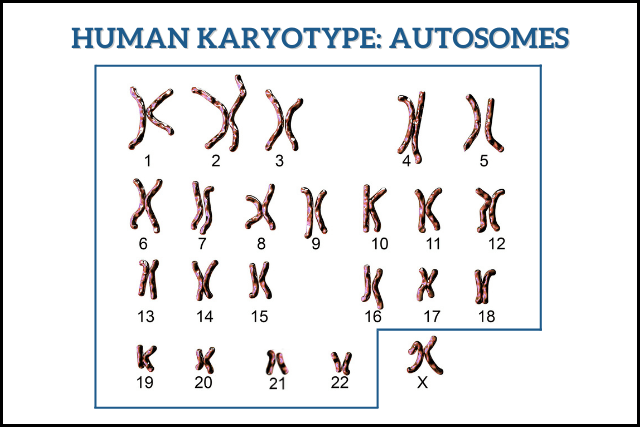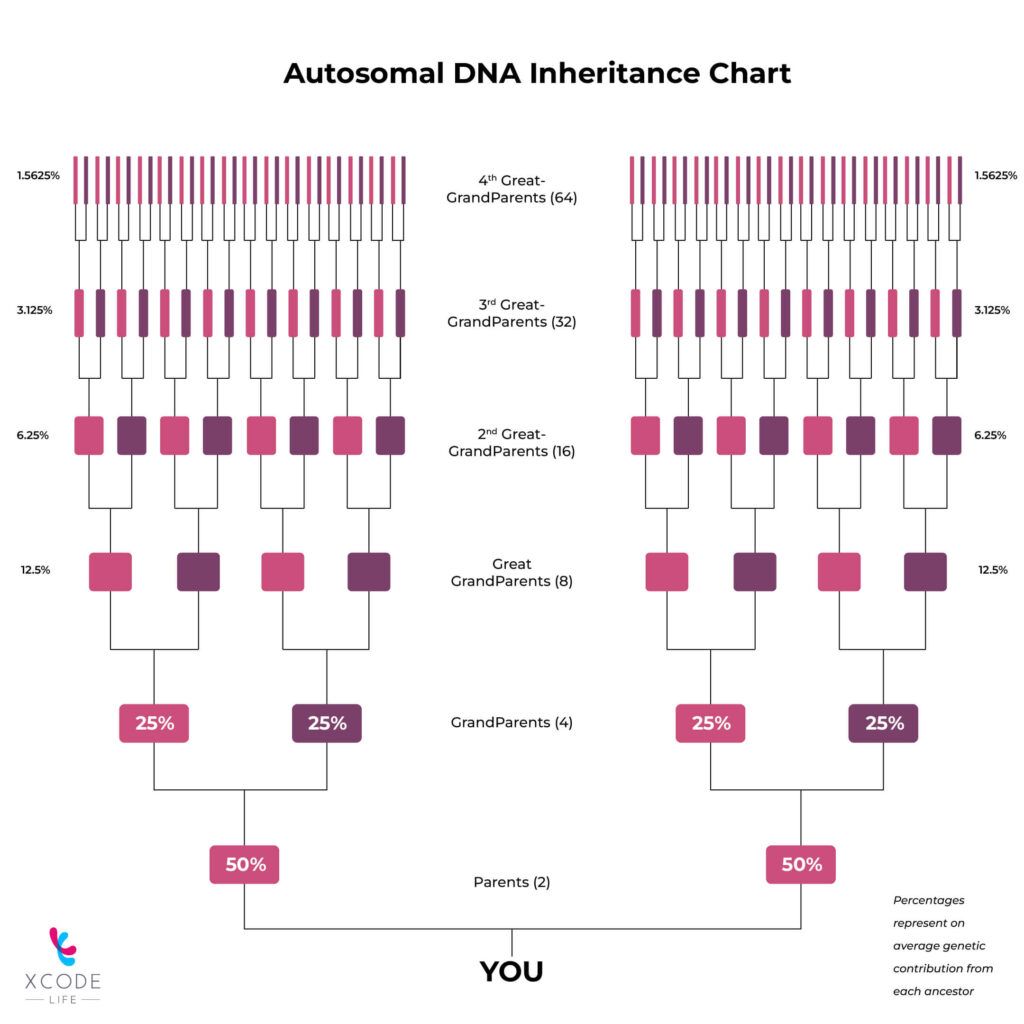Autosomal DNA testing is a powerful tool that can be used to learn about your family history. This test looks at your DNA, the unique genetic code that makes up your identity. By looking at your DNA, experts can tell you what countries your ancestors came from and how they are related to you. Autosomal DNA testing can also be used to find out if you have any genetic diseases or conditions. Autosomal DNA tests are relatively new and are becoming more popular as they become more affordable. If you're considering getting an autosomal DNA test, here's what you need to know.
What is Autosomal DNA?
Almost all humans (with some exceptions) are born with 23 pairs of chromosomes.
The X and the Y chromosomes, also called the sex chromosomes are a part of the 23rd pair.
The other 22 pairs are called the autosomal chromosomes or the autosomes.
Autosomes are numbered roughly according to their sizes.
Chromosome 1 has approximately 2,800 genes, while chromosome 22 has approximately 750 genes.
Autosomal DNA is the DNA inherited from the autosomal chromosomes.
These genes in the autosomal DNA are 99.9 percent identical in every human being.
But small changes in these genes determine the rest of your genetic makeup, whether you inherit certain traits and your risk for several health conditions.

Autosomal Dominant vs. Autosomal Recessive
Genetic material is passed on from parents to children, and so are certain genetic conditions.
However, not all health conditions have the same inheritance pattern.
Autosomal dominant and autosomal recessive inheritances are two ways a genetic condition could pass on from one generation to the next.
Autosomal dominant inheritance
In autosomal dominant inheritance, one copy of the altered gene is sufficient for the trait/condition to express itself.
Only one parent needs to pass the altered gene.
Every child of this parent will have a 50% chance of inheriting the altered gene and thus the genetic condition.
Only changes that occur in the DNA of the sperm or egg can be passed on to children from their parents.
Autosomal recessive inheritance
Conditions inherited in an autosomal recessive pattern need two copies of the altered gene for expression.
To pass it on to their children, both parents must carry at least one copy of the altered gene.
They may not express the conditions themselves if they carry a single altered copy of the gene.
In other words, they are “carriers” of a particular genetic condition.
If two carriers of the same condition have children, each child has a 25% chance of being affected by the condition, a 50% chance of being a carrier of the condition, and a 25% chance of receiving 2 normal copies of the gene.
What is Autosomal DNA Testing?
Autosomal DNA tests look at the autosomes, the 22 pairs of chromosomes that mostly everyone has.
Typically, experts use a DNA array to examine several thousand genetic regions or markers across all the 22 pairs.
Once this information is collected, they match it in their database with similar information from others.
The larger the area of the genetic region you share with another person, the more closely you are related.
Autosomal DNA tests provide greater genetic information than Y-DNA and mitochondrial DNA (mtDNA) tests, which cannot reveal much information about close relatives or recent ancestry.
How Is Autosomal DNA Used to Find Relatives or Ethnicity?
As mentioned above, scientists look at shared regions of DNA between you and several other people in the database to determine how closely you are related to someone.
The more shared markers you have with someone, the closer you are related to that person.
Scientists compare your DNA to DNA from people deep-rooted in several parts of the world to determine ethnicity.
If your DNA resembles that of people from Italy, that part of your DNA is said to have an Italian lineage.
This is how it is possible to learn where your ancestors lived centuries ago.

Who Should Take an Autosomal DNA Test?
An autosomal DNA test is ideal for someone in the following scenarios:
- If they wish to find out where their ancestors must have lived centuries ago.
- If they wish to connect with existing unknown family members.
- If they wish to understand the genetic risk of a condition that runs in their family.
Everyone can take an autosomal DNA test regardless of age and gender.
Are Autosomal DNA Tests Accurate?
Autosomal DNA tests are popular options for identifying your close and distant relatives.
In fact, this test can reveal almost all your second and most of your third cousins.
It is pretty accurate to confirm parent/child relationships.
Distant relatives may be harder to find, but some tests can reveal even up to the eighth and tenth cousin!
How To Take An Autosomal DNA Test?
Depending on the service provider you choose, the process may be slightly different.
However, there are some common steps in taking an autosomal DNA test.
- Taking a DNA sample - typically a cheek swab or saliva
- Sending the sample back to the facility
- Identification of relevant genetic markers by the scientists
- Referencing them to the existing database
- Report generation
Each service will use a different algorithm and have different reference genomes to define particular ethnicities and geographic regions.
So, the same person can get different ethnicity providers from different companies.
In fact, siblings can get dramatically different results from the same company.
Bottomline: Should You Take An Autosomal DNA Test?
In conclusion, autosomal DNA testing can be useful for those looking to learn more about their ancestry. It can also be used to help identify relatives, both close and distant. With the advent of online databases, such as 23andMe and AncestryDNA, DNA testing has become more accessible and affordable than ever. However, it is important to remember that the results of this type of test are not always accurate and should be interpreted with caution. If you are considering taking an autosomal DNA test, you should speak to a genetic counselor or other healthcare professional first.




